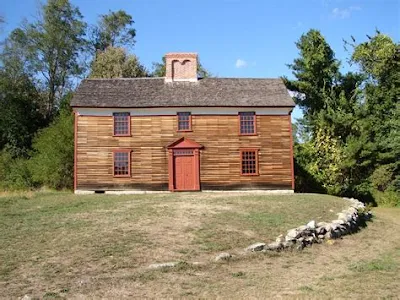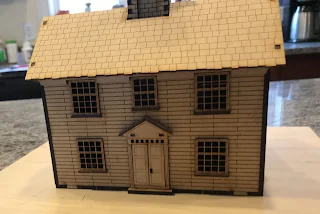 |
| Original Cap in Smithsonian museum. |
How can you be a American Rev War gamers and not have Grenadiers? We all have them in our collections. And a more noble sight on the table top there never was. And while we all know Grenadiers were picked soldiers there may be something we do not really know much about. That is their famous bearskin caps. So here is a little bit of history about those caps.
In the Royal Clothing Warrant of 1768 (which governed the uniforms worn during the Rev War period) the Grenadier caps are described:
"The caps of the grenadiers to be of black bear-skin. On the front, the King's crest, of silver plated metal, on a black ground, with the motto, "Nec aspera terrent." A grenade on the back part, with the number of the regiment,on it. The royal regiments, and the six old corps, are to have the crest and grenade, and also the other particulars as hereafter specified. The badge of the royal regiments is to be white, and set on near the top of the back part of the cap. The height of the cap (without the bear-skin, which reaches beyond the top) to be twelve inches. "
Once the new Royal Warrant was adopted regiments went about wearing out their old uniforms before obtain the new uniform. The old Grenadier cap was a cloth mitre. Some regiments continued to wear these untill worn out; other regiments covered their cloth caps in bear skin to get a start on the new fashion. The series of drawings of the 25th Regiment on Minorca island show the mixture of old and new uniforms.
By 1775 the new bear skin covered Grenadier caps were standard equipment and the old make due items long gone. There is a watercolor of a Fusilier of the 23rd Royal Welch Fusiliers on guard duty wearing his Fusilier cap in Boston done in 1775.
The new Grenadier cap was light weight and folded flat. It was constructed around a tin front plate which gave the cap it's outline and shape. The bear skin was sewed around it. Here are pictures of a original cap's various pieces to show how it was put together. Note the bear skin sewed in shape, the tin plate it is attached to and front plate to cover it. There is a linen cap inside the cap and decorative cords outside. The only part missing is the red wool covering the back.
For daily wear Grenadiers would wear a cocked hat, sometimes with a white feather. The Grenadier cap was worn for guard duty, parades and also into battle. At the Battle of Brandywine the commander of the 2nd Grenadier battalion Colonel Meadows is reported to address his soldiers by saying, "Grenadiers, put on your caps (bearskins); for fighting and drinking I'll match you against the world!"
 |
| British Marine Cap. Photo from the British Marine reenactment group at https://britishmarines.blogspot.com/2013/06/1775-british-marine-grenadier-cap.html |
For more detailed information on the cap and it's construction I highly recommend the following article:
Military Collector and Historian
Vol. 46, No. 3 -- Fall 1994
The Grenadier's Bearskin Cap, 1768-1802: A Method of Construction,
by Linnea M. Bass and William W. Burke





















































